Ask Ethan #63: The Birth of Space and Time
If there’s something before the Big Bang, then what does that mean for the beginning of our Universe?
“You can try to lie to yourself. You can try to tell yourself that you put in the time. But you know — and so do I.” –J.J. Watt
It’s been half a century since the greatest new predictions of the Big Bang were confirmed, changing our conception of the Universe forever. Rather than having existed forever, and rather than the part accessible to us being infinite in extent, we now know that all we perceive has only been around for a hair under 14 billion years of cosmic time, with our Sun and Solar System present for merely the last third of it. Which is what makes today’s Ask Ethan question so interesting, courtesy of Sebastián:
When did the space-time begin? When I was a child, I learned that the Big Bang was the beginning of everything. I guess this picture is not currently true, since before the Big Bang there was the cosmic inflation, and the Big Bang was not even a bang but a state where the Universe was hotter and denser. If there was inflation before the Big Bang, then there was space-time before the Big Bang, right?
There are three things we need to think about to fully address Sebastián’s question, and the first one is what we mean by space and time.
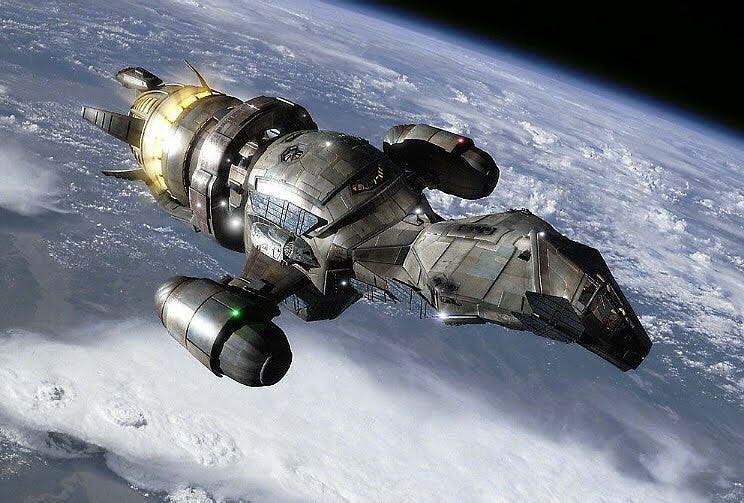
You may be used to our everyday experiences of space — notions like length, width and depth — and time, which you might simply think of as the answers to the questions of where and when. This actually isn’t such a bad conception of things, but there are two things you need to know about space and time that might be a little bit less than intuitive. In fact, it literally took an Einstein to figure it all out, and even he needed some help!
The first is that space and time weren’t separable notions, as Newton thought they were. If you move through space, it fundamentally changes how time passes for you, and if two people move through space at different rates relative to one another, the way they experience time for themselves and the way they see time passing for the other person will be different from one another.

The way this makes the most sense — and it wasn’t Einstein who figured this out, but rather the mathematician Hermann Minkowski — is to consider a unified concept of spacetime, where instead of three spatial dimensions and one time dimension, we consider a new four dimensional entity known as spacetime. Speaking in 1908, Minkowski put forth the idea:
The views of space and time which I wish to lay before you have sprung from the soil of experimental physics, and therein lies their strength. They are radical. Henceforth space by itself, and time by itself, are doomed to fade away into mere shadows, and only a kind of union of the two will preserve an independent reality.
Although Einstein was initially resistant to this revolution, his eventual acceptance of it led to an even greater revelation.
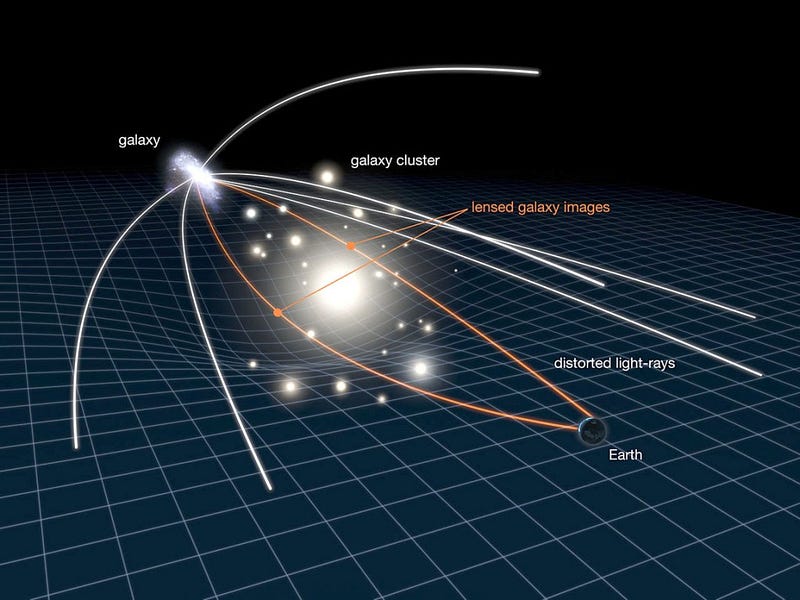
The idea that not only were space and time connected into a unified 4D fabric, spacetime, but that the curvature of this 4D fabric was caused by the presence of matter and energy! Just as motion through spacetime affected how different observers experience the passage of time and the distances of space, the presence of matter and energy (and of curvature in general) affects the experience of space and time, too.
And in the most extreme examples of concentrations of matter and energy — into a singularity — notions of space and time break down!
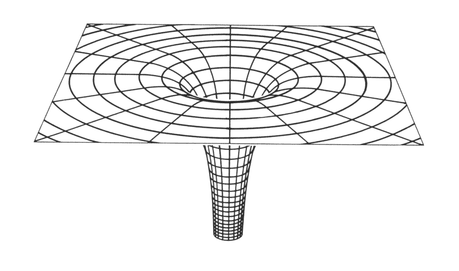
Our most common conceptions of singularities are at the centers of black holes, where we achieve an arbitrarily large (and possibly infinite) density of matter and energy at a single point. In this case, our conception of spacetime breaks down, as Einstein’s equations give nonsensical results.
Which brings up the second thing we need to think of: the framework of the Big Bang!
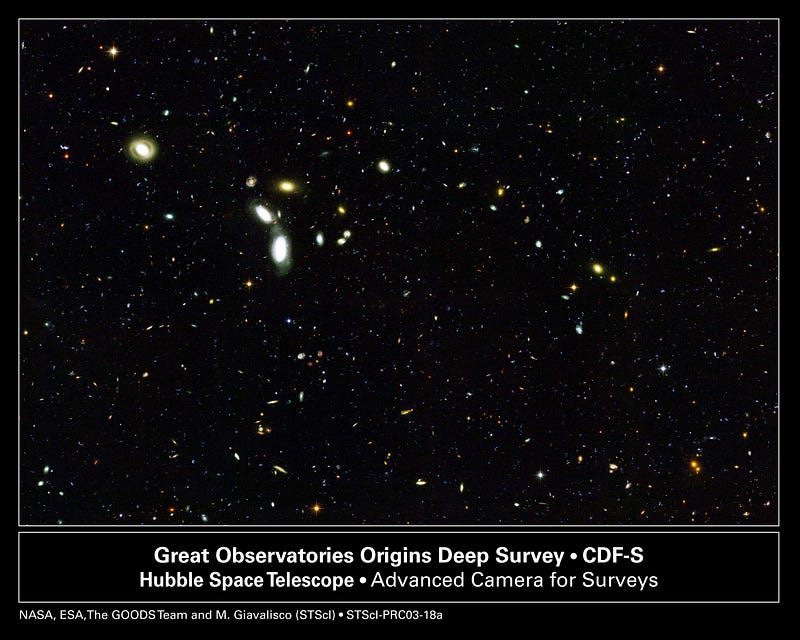
We think of the Universe as being a relatively cold, empty place today, save for the dense concentrations of matter, stars, planets and life that have formed over the billions of years the Universe has been around. Thanks to gravity, electromagnetism and the nuclear forces, we’ve built up this towering cosmic structure that ranges from the subatomic scale all the way up to tremendous clusters of galaxies.
But if we go back in time, we discover that not only were things more gravitationally uniform in the past, but also that our cooling, expanding Universe was hotter (since wavelengths of light were shorter) and denser, all due to the nature of the way spacetime expands.
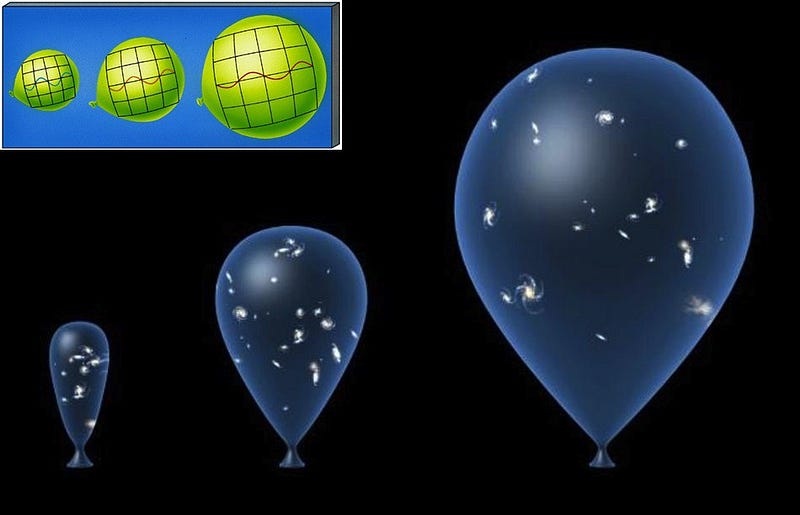
We can go as far back in time as we like, to the earliest stages imaginable, to ever higher energies, hotter temperatures and increasing densities. We can go back to:
- A time before any stars or galaxies formed, to when the Universe was just a sea of warm, neutral atoms.
- A time when it was too hot to form neutral atoms at all, when the Universe was just an ionized plasma of nuclei and electrons.
- A time when it was too hot to even form simple nuclei, as free protons and neutrons (along with electrons and photons) reigned.
- A time when densities and temperatures were so high that particle collisions routinely and spontaneously created matter/antimatter pairs of all the known particles in the Universe.
And you might think to go even further than that, to an arbitrary high density, high temperature and to an “event” in spacetime that also corresponds to a singularity: a moment where the entire Universe is concentrated into a single point.
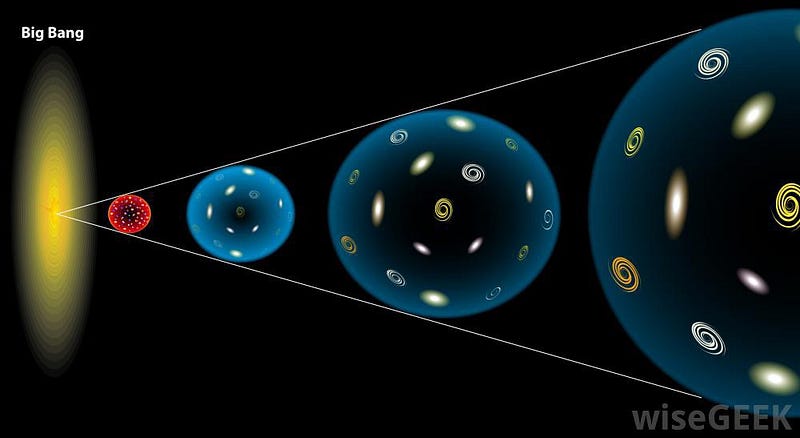
If this were the case, this is exactly where space and time began, as there’s no such thing as “where” outside of space, and no such thing as “when” outside of time. But there would have been a myriad of puzzles that were simply unexplained about our Universe if we accepted this as the true beginning, as we now have physics that teaches us that we can’t go arbitrarily far back, but rather that a state of inflation — of an exponentially expanding spacetime with energy inherent to space itself — preceded and led to the hot, dense expanding state that we identify with the Big Bang.
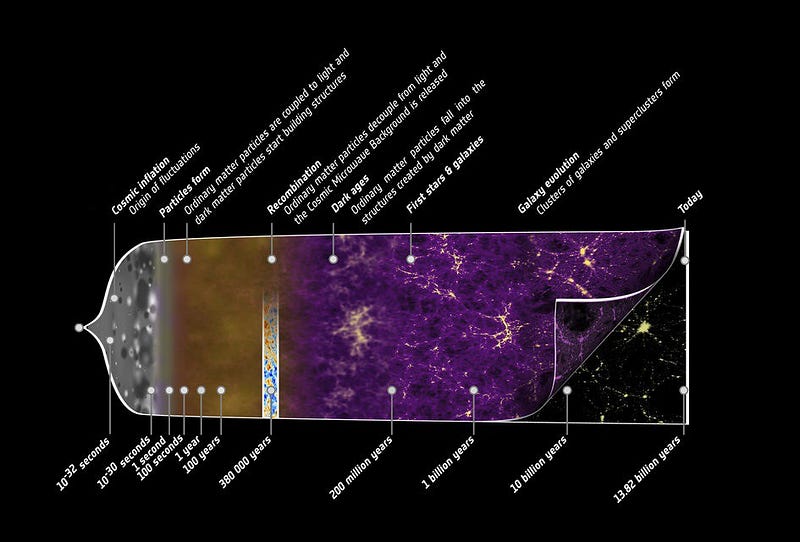
Because the moment that energy, all bound up in space itself, gets converted into matter and radiation, the exponential expansion ends, and gives us a Universe that appears just as we conceive our early Universe to have been.
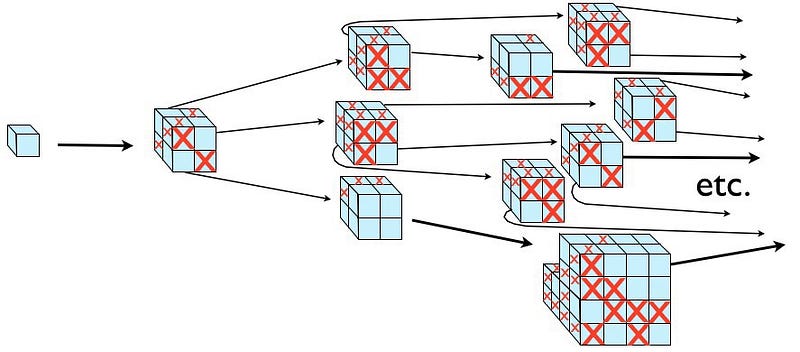
But now that leads to the third and final point, keeping our notions of singularities in spacetime and the Big Bang in mind: if the Universe before the Big Bang — back during inflation — consisted of exponentially expanding spacetime, where did that spacetime come from?
As crazy as it seems, there are three very intuitive options.
- The Universe could have had a beginning, before which nothing existed.
- It could have existed eternally, like an infinite line extending in both directions.
- It could have been cyclic like the circumference of a circle, repeating over and over again infinitely.
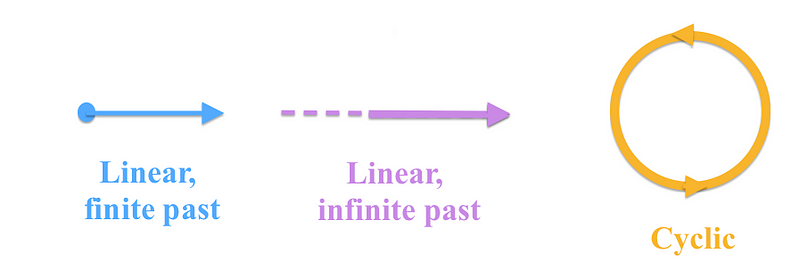
If we went with the old Big Bang (and no inflation) picture, the evidence would favor option 1: the Universe being born at the “moment” of infinite, arbitrarily high energies, and along with it, the birth of spacetime.
However, inflation changes that tremendously. It tells us that rather than a singularity at “t=0”, or where the Big Bang occurred, it tells us that the Universe existed in an inflationary state, or a state where it was exponentially expanding, for an indeterminately long amount of time.
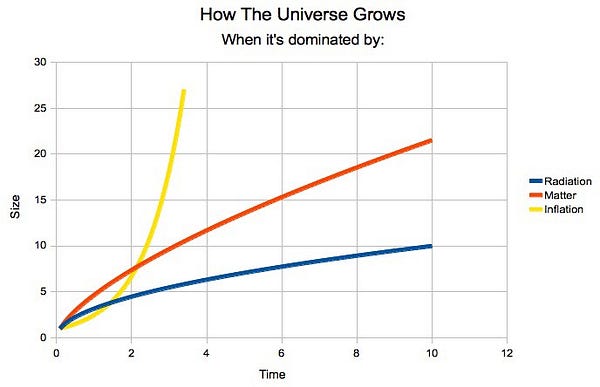
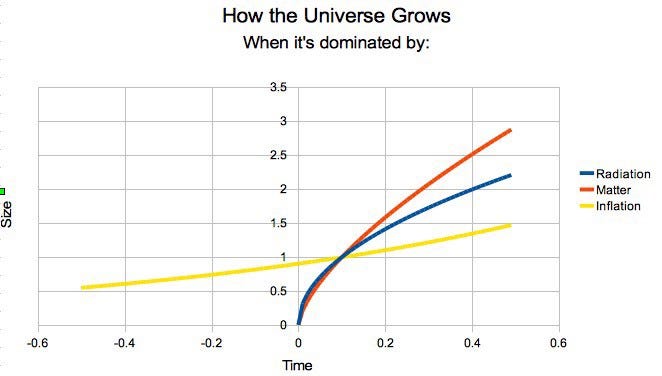
So it appears to favor option 2: the Universe being eternal to the past.
But there’s a catch to even that, as it turns out. There is a theorem that tells us that an inflationary Universe is past-timelike incomplete: that an ever-expanding Universe must have began from a singularity.
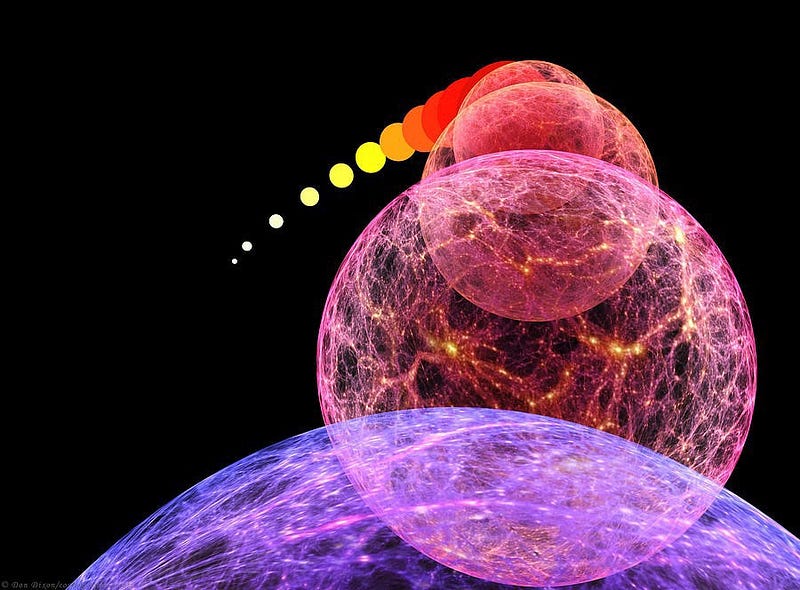
But that may not be fair, in the sense that the theorem is based on the known laws of physics, and applying them to a time when the known laws of physics break down. Furthermore, as huge and full-of-stuff as our Universe is, the amount of material (and hence, information) in it is still not infinite! With some ~10^90 particles (including photons and neutrinos), going back all the way to the hot, dense expanding state of the Big Bang and then some 10^-30 seconds before to the last moments of inflation, there are some things that are still observationally inaccessible to us.
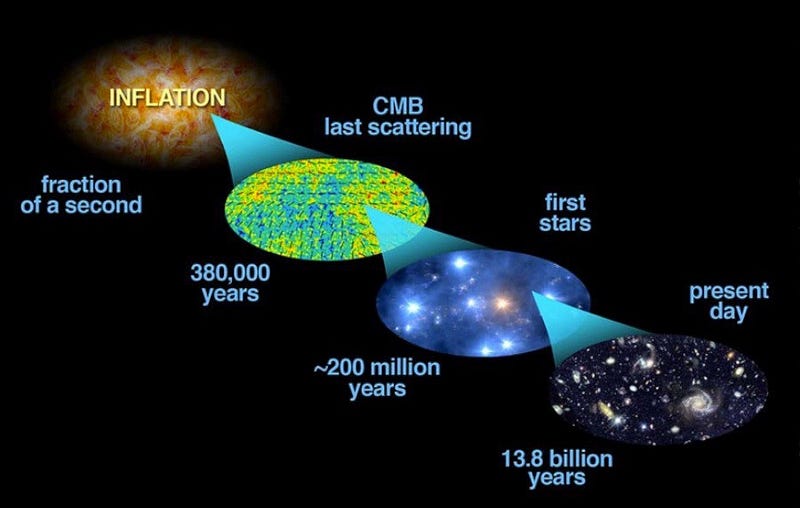
Unfortunately, one of those things is where that inflating spacetime came from!
Whether all this means that an inflating Universe couldn’t have lasted forever or whether that means our current rules of physics are not applicable to figuring out whether it lasted forever, had a beginning or is cyclical are unknown. It’s even possible that time is cyclical, and that the cycles change with each iteration! For all our progress, we still have the same three options that philosophers and theologians have considered for millennia: time is finite, time is infinite, or time is cyclical.
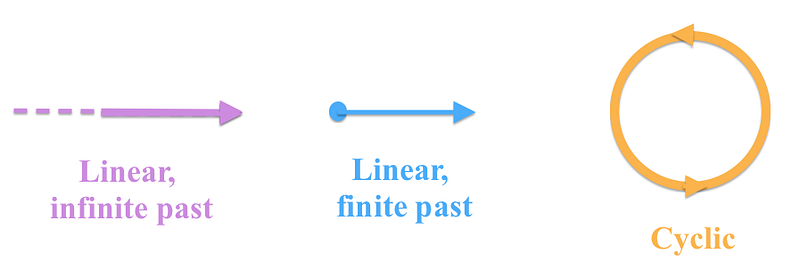
The only thing we know is that if there was a singularity in the past, it didn’t have anything to do with our Hot Big Bang that every particle of matter-and-energy in our observable Universe is traceable to.
And unless we figure out a new way to gain information about what happened before the Universe observable to us existed in any meaningful sense, the answer may forever be beyond the reach of what is knowable. Not every Ask Ethan question is going to have a definitive answer, but rather this is the best we know given our current body of knowledge. I’m pleased to announce that the next five Ask Ethan questions that are chosen will also be the winner of a free holiday giveaway (to be announced tomorrow), so don’t just send in your questions and suggestions here, but also let me know how to contact you, in case you’re one of the lucky winners!
Leave your comments at the Starts With A Bang forum here, and submit your Ask Ethan questions and suggestions here for a chance to win!





